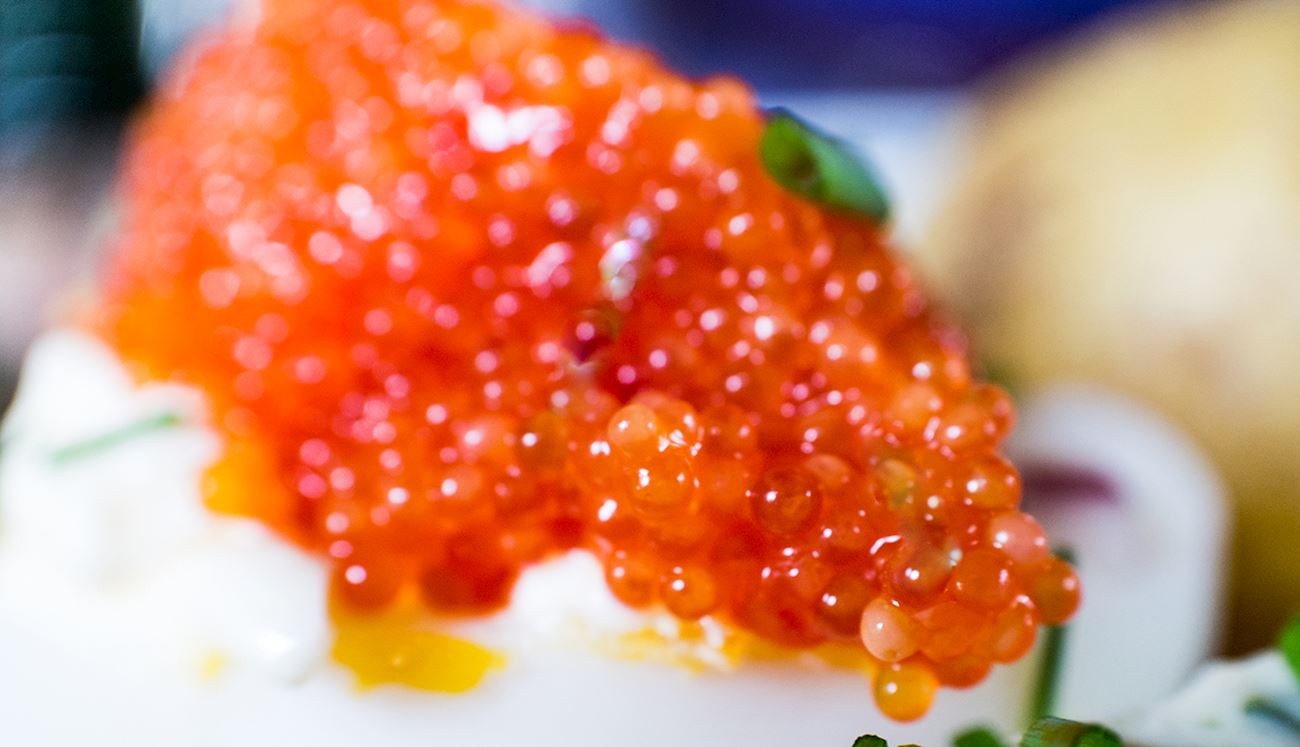Hákarl is Iceland's national delicacy made from cured shark flesh, namely Greenland shark and other sleeper sharks. The meat is first fermented for up to three months, then hung and left to dry for another four to five months. There are two varieties of the dish: the chewy, reddish glerhákarl, and tender, white skyrhákarl.
It is often considered to be food for the brave, because the high ammonia content often makes people gag. The cured shark meat is typically cut up into cubes and served on toothpicks with an accompanying shot of a local spirit known as brennivin.
Lumpfish roe is one of the more available roe varieties, and it is usually reasonably priced. It is harvested from lumpfish (Cyclopterus lumpus), which is mostly found in the cold waters of the North Atlantic. The natural color of the roe can vary, though it is usually pale gray or dusty pink.
However, most producers opt for artificial coloring to attain appealing red or black hues. The beads are small, mildly-flavored, briny, and subtly sweet. Lumpfish roe is an excellent addition to appetizers, salads, soups, or seafood-based main dishes.
One of the staples of traditional Icelandic diet, harðfiskur is a fish delicacy made by following an old preserving method that involves drying fresh fish on wooden racks, outdoors in the cool Icelandic wind. The fish may be soaked in a weak brine before being dried for a slightly saltier flavor of the finished product.
Typical fish include haddock, cod, and wolfish, although fish such as flounder or arctic char can also be used. After drying for several weeks, the fish obtains a tough, papery, and chewy texture, and a characteristic yellowish hue, while the flavor is salty with a strong odor.
TasteAtlas food rankings are based on the ratings of the TasteAtlas audience, with a series of mechanisms that recognize real users and that ignore bot, nationalist or local patriotic ratings, and give additional value to the ratings of users that the system recognizes as knowledgeable. TasteAtlas Rankings should not be seen as the final global conclusion about food. Their purpose is to promote excellent local foods, instill pride in traditional dishes, and arouse curiosity about dishes you haven’t tried.



